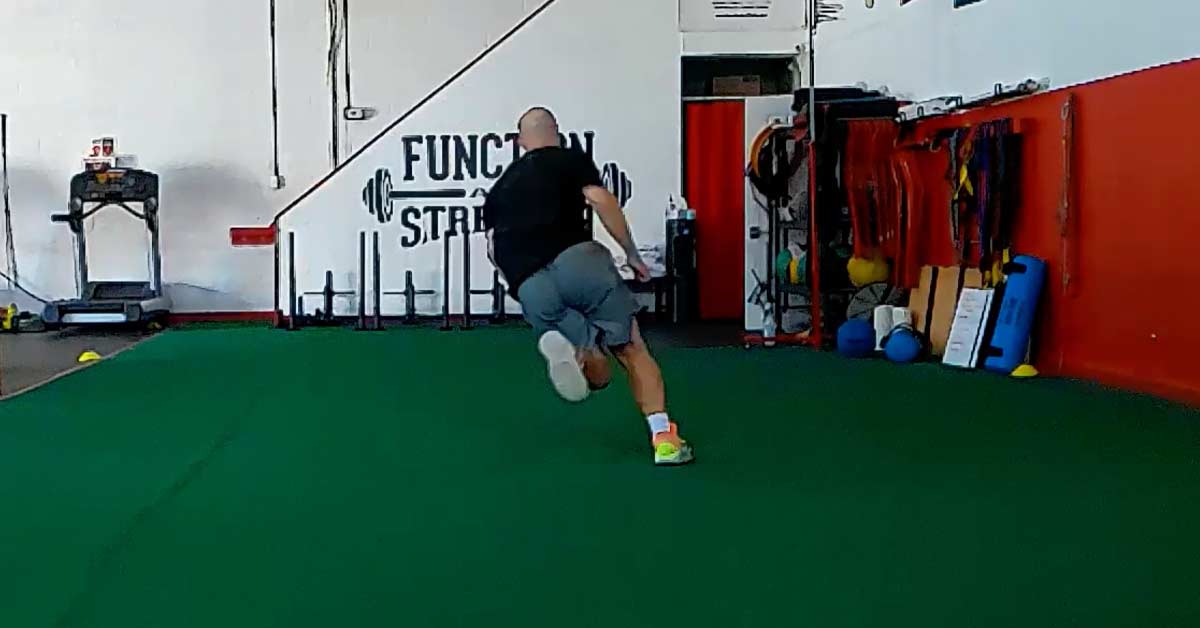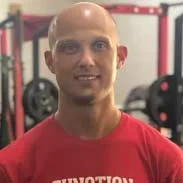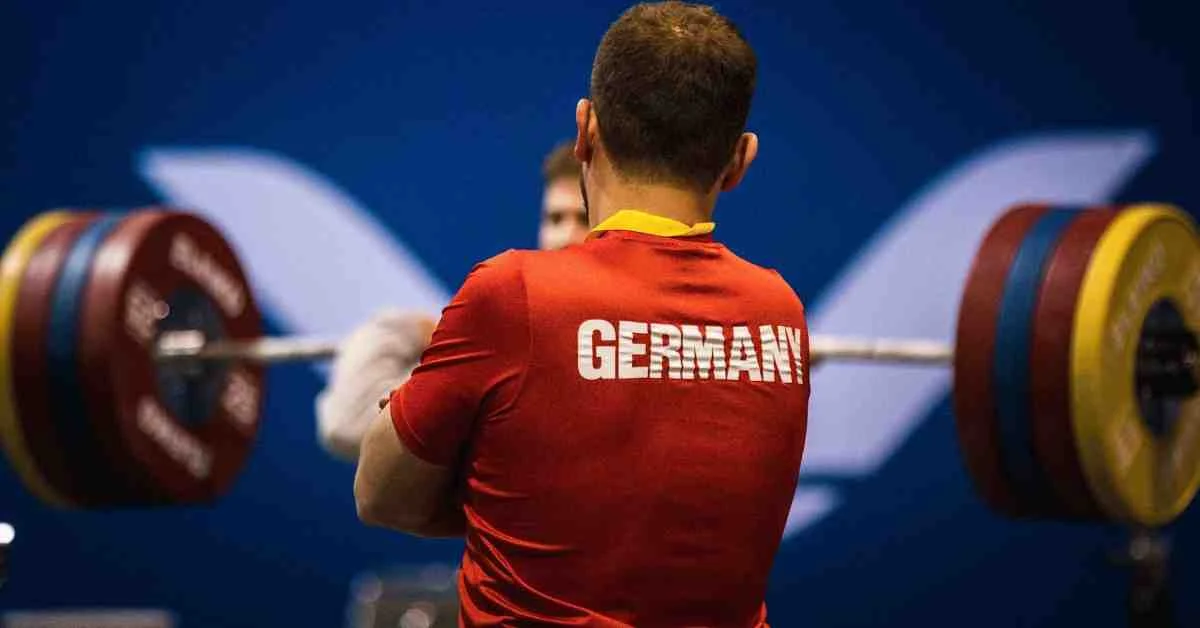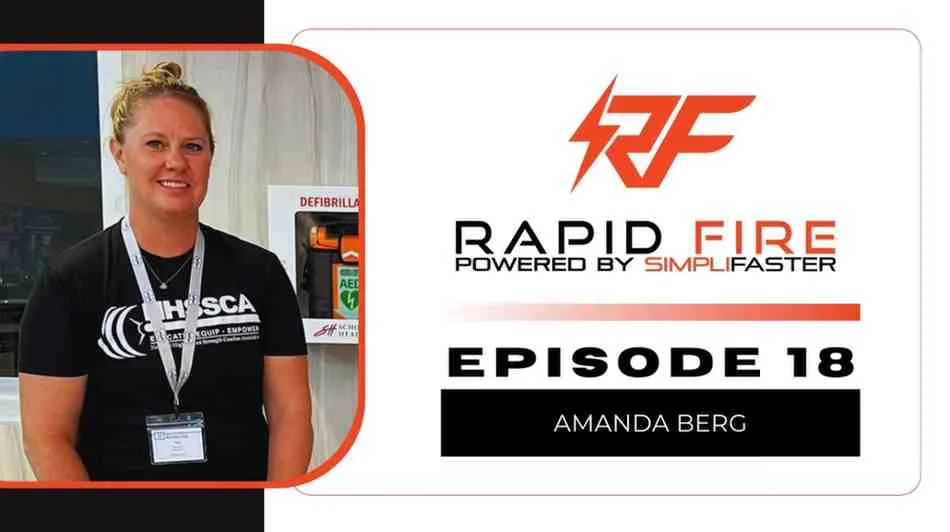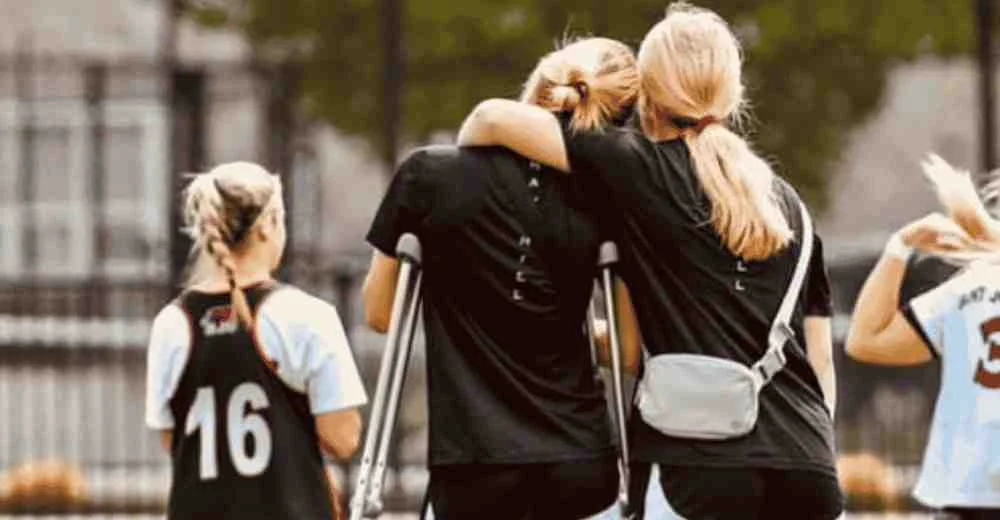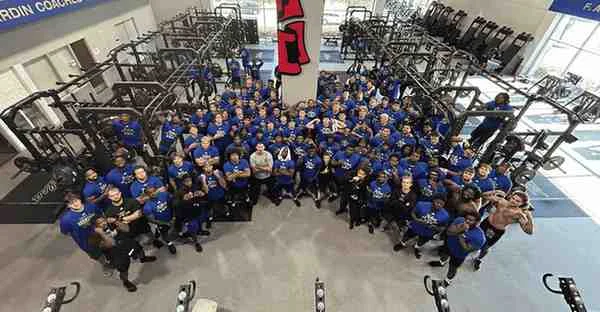There have been a number of articles on this site dedicated to all aspects of movement in sports, such as acceleration, max speed, and change of direction patterns. The skill of moving well in competition is not solely about doing each of these movement patterns in isolation—it’s about being able to transition from one movement pattern to another or to link patterns. I define good athletic movement as choosing the appropriate movement pattern at the appropriate time and executing it exactly as you want to. Athletes must not only be able to recognize and choose the correct movement pattern—which is a skill itself—but they also must be physically capable of fluidly transitioning from one movement pattern to another.
I define good athletic movement as choosing the appropriate movement pattern at the appropriate time and executing it exactly as you want to. Share on XThe movement patterns you see in athletics consist of a lateral shuffle, lateral run, hip turn, plyo step, and backpedal, curvilinear running, and linear running. In a previous article on multidirectional plyometrics, I covered these movements patterns and discussed examples of when you may see them in sport. It’s important that your athletes become proficient in each of these patterns, and depending on the sport and position, they may need to be exceptional in a few of these patterns.
Why Do We Need to Move Well?
Improving speed directly coincides with coordinating transitions between movement patterns with better timing and fluidity. Performing only agility drills—which are drills that involve a cognitive component—will not ensure quality movement transitioning between all patterns of movement. Frans Bosch explains this in his book Anatomy of Agility: “the information filter is determined not only by the quality of perception but also by the motor solutions that can be planned in the light of the information; so the filter also depends on the capabilities of the body.”1 Once again, perception is only one part of the movement equation: if you do not have the physical capacity to coordinate between movement patterns, you are missing one of the most critical pieces of athletic development.
If you do not have the physical capacity to coordinate between movement patterns, you are missing one of the most critical pieces of athletic development. Share on XMost sports do not involve movement from a static position. Therefore, being able to transition from one movement to another becomes even more critical. Here’s a quick example of just how often these types of transitions happen in sport:
A soccer defender performs a backpedal as an opposing wing approaches him. As the wing gets closer, the defender positions himself to direct that opponent toward the sideline. As the attacking player continues to approach with more speed, the defender performs a hip turn to transition from a backpedal to a lateral run. The attacker continues to pick up speed in an attempt to beat the defender wide and cut toward the goal. As this happens, the defender transitions from a lateral run to a curvilinear run.
As you can see, in a simple game-like scenario, there are multiple transitions among movement patterns. Performing any of those linking patterns poorly could be the difference between allowing a scoring chance and making a stop. Going back to the example, what if the defender is not good at transitioning from a backpedal to a lateral run and this leads to a scoring opportunity? Was this caused by his perception or a lack of ability to fluidly link these movement patterns?
It’s this question that all coaches must answer—an athlete’s perception may tell them what to do, but they just may be poor at executing the transition.
Fluidly Linking Movement Patterns Together
I’ve referenced being able to fluidly transition from one movement pattern to another, but what exactly does that look like? When analyzing movement, you can get into extremely detailed discussions of joint angles and creating force through various positions, but for the purposes of this article, I’ll talk about some broad concepts of good movement. Most coaches can identify good movement when they see it, but unless you are looking at movement through video, it can be difficult to identify exactly what led to a poor transition from one pattern to another. The more video you watch of athletes of all skill levels and abilities, the easier it will be to pick up on some of the big differences.
Begin by looking at the movement in general. Does it appear to be somewhat robotic or are there smooth transitions between patterns? Robotic movement demonstrates a lack of coordination among joints. Some of the movement may be fluid, while other parts are not as smooth. It will look as if certain joints are frozen together.
After looking in general at the movement, begin looking at the foot and then work your way up the body. Look for a stiff plant from the foot upon any sort of repositioning or changing pattern. A stiff foot plant indicates more force directed into the ground. This is important because it helps maintain the stride frequency of the athlete. Athletes who move better from one pattern to the other are able to maintain their gait cycle compared to lesser-skilled movers. If less force goes into the ground when linking movement patterns, the frequency of an athlete’s gait will decrease, which means their overall speed is decreasing.
Continuing to work our way up the chain, we’ll take a look at what’s going on with the upper body. When performing any sort of directional change, the upper body should lead the movement. If an athlete is sprinting straight ahead and they make a cut to the side, the upper body should slightly turn that direction prior to the hips turning that direction. If it were the other way around—where the hips lead the movement—the upper body would lag behind, which makes that change of direction slower and less efficient.
It’s not uncommon to see an athlete perform transitions between certain patterns well and others not so well. You may also notice an athlete performing transitions well toward one direction compared to the other. I’ve specifically noticed this with defenders who play on one side of the field all the time. Often, a defender tries to take away the middle of the field and push the offensive player toward the sidelines. If a defender is playing the right side of the field, they are turning to their right far more often than their left. However, getting out of position and being forced to turn to their left can expose a poor linking skill.
Create a Theme for the Day
As strength coaches, most of us don’t have the ability to train our athletes for endless amounts of time. We may get one hour to train them. One hour is not enough time when you start to include a warm-up, plyometrics, speed training, and resistance training—you may only get about 15 minutes of actual speed training for the day. If that’s the case, you’ll be hard-pressed to expose your athlete to all patterns of movement without a well-thought-out plan.
Creating a theme for the day will give you a general focus as a coach and allow you to explore some other movement possibilities in terms of speed training. You may want your athletes to work on curvilinear running one session—instead of just having them run curves from a standard static start, you can begin to work on transitions by performing them prior to your curvilinear run. A hip turn, linear sprint, lateral run, and lateral shuffle can all be mixed in prior to running around a curve. While the focus may be on curvilinear running, you are still exposing your athletes to a variety of movement skills.
Try to find movement transitions that challenge the physical ability of the athlete. If every drill you do is easy, the athlete already has the physical capacity to perform the skill. Share on XTry to find movement transitions that challenge the physical ability of the athlete. If every drill you do is easy, the athlete already has the physical capacity to perform that skill. Continuing to perform this skill will not expand their movement library. You can create more or less difficulty by manipulating the speed going into the transition as well as the angle coming out of the transition. Be sure to add variety into your training to enhance learning and build a bigger movement foundation.
Video 1. The transitions in this clip demonstrate how you can target one specific pattern—in this case a curvilinear run—while still incorporating a variety of other movement patterns.
Multidirectional Plyometrics for Specific Movement Patterns
When I think about the greatest impact I can have on an athlete as far as transferring what I do in the gym out to the field, it’s improving the quality of linking skills and improving the speed and power at which the athlete performs transitions. These types of drills are great for teaching athletes to produce a high amount of force while limiting time on the ground.
Similar to choosing a theme for your speed training each day, you can perform multidirectional plyometrics to match a specific type of pattern you may be looking to improve. It may be improving power at an angle forward or backward or even directly to the side. Too often, we rely on only vertical or horizontal plyometrics, but as I discussed earlier, power on the field happens when transitioning between patterns—and that can happen at all angles and directions.
Video 2. The first part of the video shows a hip turn to a lateral run, followed by a sprint. Following this initial drill are a couple progressions to demonstrate how to develop more explosiveness when transitioning from the lateral run into the sprint.
Wrap-Up
As a coach, when you really start to look at how we can impact performance, it starts with improving the speed, power, and coordination ability of our athletes on the field. Moving well is a skill. Some athletes naturally have it, while others need to be taught.
Regardless of the level of experience of the athlete, continue to improve their physical capacity to move well, in addition to challenging and expanding their movement library.
Reference
1. Bosch, F. Anatomy of Agility: Movement Analysis in Sport. 20/10 Publishers. 2020.

